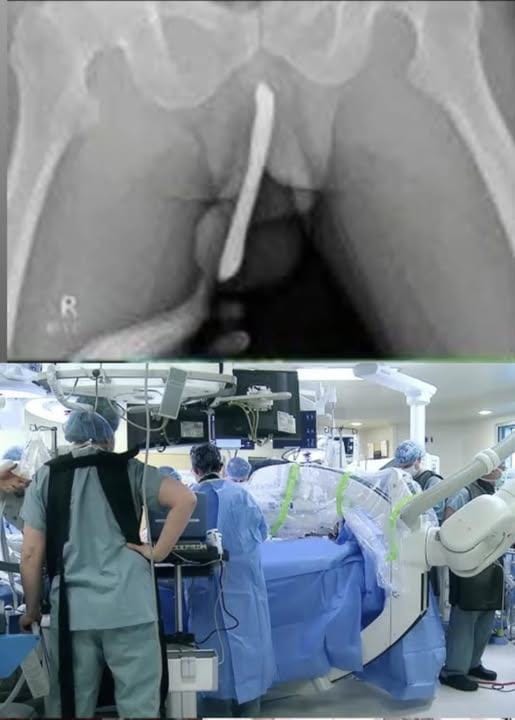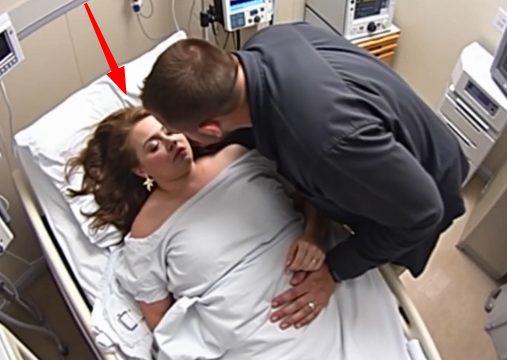A recent and troubling incident involving a teenage girl has become a stark reminder of the importance of accessible, honest, and age-appropriate education about health and bodily safety. The young girl was hospitalized after a serious medical emergency caused by her attempt to insert a common household item into her body.

According to the initial reports, she had been alone in her room at the time. Motivated by curiosity and influenced by a lack of accurate, reliable information, she made a choice that quickly turned dangerous. The object caused internal trauma, which led to intense pain, significant bleeding, and a situation that required urgent medical attention. Thankfully, she was found in time and quickly taken to the hospital. Upon examination, doctors determined that she needed immediate intervention to remove the object and prevent further injury. Medical staff worked quickly to stabilize her condition, and their rapid response likely prevented the situation from becoming far worse.
Physicians later warned that without prompt treatment, the injuries could have resulted in permanent internal damage, severe infection, or even life-threatening complications. While the physical crisis was managed successfully, the event underscored a deeper, ongoing issue: many adolescents do not have consistent access to trustworthy education about their own bodies, safe behavior, and how to handle curiosity in a way that doesn’t jeopardize their health. Without open communication or a safe space to ask difficult questions, teens may turn to unsafe methods of exploration, unaware of the potential consequences.
Health experts, educators, and family counselors are now emphasizing that this kind of emergency is preventable, but prevention requires a proactive approach. Parents and guardians are encouraged to foster open, nonjudgmental conversations with their children about anatomy, personal safety, and healthy boundaries. Schools, too, play a vital role by providing comprehensive, fact-based education about health and self-care, ensuring that students understand both the physical and emotional aspects of their bodies. Experts stress that young people need accurate answers to their questions before they resort to risky behavior.
This means creating an environment where teens feel comfortable seeking advice, whether that’s from parents, teachers, counselors, or healthcare providers. It also means addressing misconceptions early and replacing myths or misinformation with clear, medically sound facts. Professionals point out that a lack of proper guidance can lead to scenarios like this one, where curiosity turns into a medical emergency. Providing young people with age-appropriate information helps them understand the potential dangers of inserting objects not designed for medical or personal use into their bodies. Such actions can cause severe injury, infections, and other complications that might not be immediately visible but can have long-lasting effects.
The lesson from this case extends beyond just warning against unsafe experimentation—it highlights the need to normalize conversations about the human body. Adolescents should be able to talk openly about their questions and experiences without fear of shame or punishment. This openness builds trust, and trust leads to better decision-making. When teens know they can come forward with questions, they’re more likely to make safe, informed choices. Healthcare professionals recommend that education about bodily safety start early and be ongoing, adapting to a child’s maturity and experiences. They encourage parents and educators to discuss not just the “don’ts” but also the “whys,” explaining the reasons behind safety guidelines.
This approach helps young people understand that the rules are there to protect them, not simply to limit them. In addition, experts suggest that communities invest in resources that make accurate health information easy to access—whether through school programs, youth centers, or online platforms specifically designed for adolescents. Such initiatives can bridge the gap for teens who may not feel comfortable discussing certain topics at home. In the end, this incident serves as a sobering but valuable wake-up call. With the right tools, knowledge, and support systems, adolescents can explore their curiosity in ways that are safe and respectful to their own health.
Preventing similar emergencies is entirely possible, but it requires a joint effort between families, schools, and healthcare providers. By encouraging honest dialogue, providing clear and accurate information, and making sure teens know they have trusted people to turn to, we can help them navigate this critical stage of life without unnecessary harm. This case, while frightening, reinforces the fact that education and communication are the most powerful tools we have for protecting young people’s well-being.





